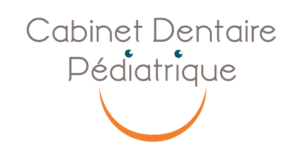MIH or hypomineralization of molars and incisors is a disease that affects the enamel of the teeth.
Ultimately, the consequences of MIH on oral health can be significant, and we will elaborate on them in this article.
Today, 15-20% of children are affected by IHD, and the number of cases has been increasing over the last few decades, so it is a risk to be prevented from an early age.
MIH: understanding children's tooth disease
Definition of MIH
The MIH is the acronym for "molar incisor hypomineralisation"This is a hypomineralization of the molars and incisors. It is a condition of the enamel of the milk teeth.
The mineralization of the child's teeth takes place during the last trimester of pregnancy and the child's 4th birthday, but this can vary from one child to another.
An anomaly can occur and disrupt this mineralization process. The teeth will then appear with less enamel, or even without enamel. As a result, the teeth are greatly weakened.
Among the consequences, a much higher risk of cavities!
Causes and consequences
While the causes of HIL remain relatively unclear, some probabilities are mentioned. Among them, the administration of antibiotics to the baby or the taking of medication during pregnancy.
Other hypotheses are that MIH is due to:
- dioxin poisoning (environmental pollution) or bisphenol A poisoning,
- difficult pregnancy, premature delivery, or hypoxia during delivery,
- a change of environment,
- ENT diseases in early childhood,
- repeated high fevers
- taking antibiotics,
- or the genetics of the parents.
MIH results in the exposure of dentin and hypersensitivity to heat and cold.
The affected tooth may also be painful to chew and brush. As a result, there is a risk that the child will avoid brushing the painful tooth and that plaque, which causes cavities, will accumulate in the area.
Eventually, carious lesions appear and progress rapidly.
The symptoms of MIH
MIH can be suspected by being alert to certain symptoms such as:
- Opaque (white, yellowish or brown) areas on the teeth,
- Hypersensitivity to hot or cold foods or drinks,
- A fracture of the enamel.
What to do in case of hypomineralization of molars and incisors?
Prevention and treatment
MIH affects both incisors and molars. However, the first permanent molar (PMP) is particularly vulnerable to caries damage because it is the point where chewing is strongest.
The PMP is considered the cornerstone of the dental arch. It is the first permanent molar that guides the permanent dentition and controls, among other things, the dental occlusion.
The treatment of MIH depends on when the lesions are detected. In other words, the severity of the damage. Because of the importance of the permanent first molar, the emphasis is on prevention and temporization. However, depending on the damage, treatment may require extraction of the permanent first molar and replacement with a crown.
The different stages of MIH treatment
In the case of a low level of impairment, the approach will be preventive with :
- A motivation for oral hygiene,
- Prescription of fluoridated toothpastes and mouthwashes,
- The application of fluoride varnish, the use of desensitizing toothpastes and CPP-ACP (casein-amorphous calcium phosphate phosphopeptide) based creams that help remineralize the enamel,
- The sealing of the grooves.
For moderate damage, the treatments are:
- Direct restorations bonded with CVI (glass ionomer cements) or composite resins,
- Prevention to avoid aggravating the condition.
If the damage is severe, the means of treatment are:
- The placement of preformed pedodontic caps in order to temporize while waiting for the end of growth for the placement of definitive crowns,
- Extractions are to be considered as a last resort.
MIH in children: what can be done to help?
The parent can be of great help by accompanying his or her child on different points:
- Encourage brushing after each meal with fluoride toothpaste (age-appropriate) and a soft toothbrush,
- Teach them certain dietary rules to avoid snacking and limit foods that promote cavities (sugary foods and drinks),
- Take him to the pedodontist regularly.
What is the follow-up for hypomineralization of molars and incisors?
In order to properly follow the evolution of MIH, it is recommended to make an appointment every 3 months with the dentist who follows the child.
During these appointments, the pedodontist can apply a fluoride varnish on the teeth concerned and seal the grooves of the permanent molars that are not decayed. Decayed teeth are treated and specific pain management is also available.


